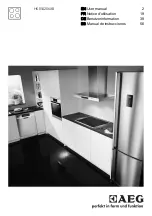
The installation of this stove is a notifiable building works as defined in the building regulations. It
is a legal requirement under England and Wales Building Regulations that the installation is either
carried out under Local Authority Building Control approval or is installed by a Competent Person
registered with a Government approved Competent Persons Scheme. HETAS
†
Ltd operates such a
Scheme and a listing of its Registered Competent Persons can be found on its website at
www.hetas.co.uk.
III. CHIMNEY
The chimney height must be no less than 4.5 metres (14’ 9”), measured vertically from the top of the
stove to the top of the chimney. It should terminate in accordance with the latest version of the Building
Regulations.
Optimum internal dimensions of the chimney should be 175mm (7”) or 200mm (8”) either square or
round, and must not be less than 150mm (6”) diameter.
This appliance must be installed into a ‘Class 1 Chimney’ (insulated metal). Installation with an older
chimney is a potential fire hazard.
Prior to installation, existing chimneys must be swept and examined by a competent person to ensure
safety and suitability. The chimney must be in good condition with no cracks or blockages.
If the chimney is in poor condition or covers an excessive cross-sectional area, seek expert advice from
a qualified, HETAS
†
approved chimney engineer. It may be necessary to have the chimney lined with a
solid fuel compatible liner.
Where the chimney is believed to have previously served an open fire installation, it is possible that the
higher flue gas temperature from a closed appliance may loosen deposits that were previously firmly
adhered. This can result in flue blockage. In this instance, the chimney must be swept a second time within
a month of regular use after installation.
If there is no existing chimney, a prefabricated block chimney or a twin walled, stainless steel flue
to EN 1856-2 can be used either internally or externally. This must be fitted in accordance with the
manufacturer’s instructions and Building Regulations. It must also be tested to HETAS
†
requirements. Seek
expert advice from a qualified, HETAS
†
registered chimney engineer.
†
or equivalent local body


































